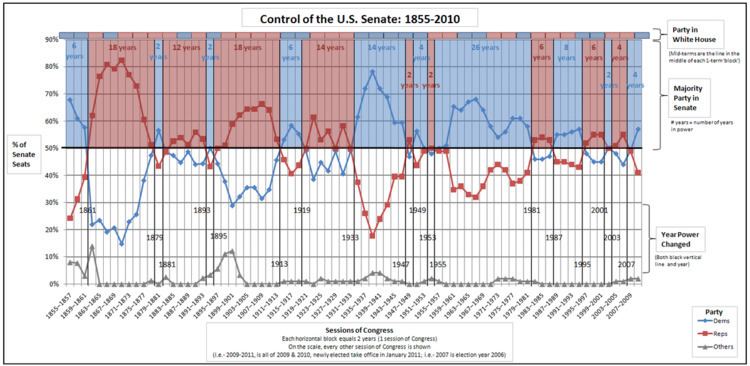 | ||
Control of United States Congress
Since 1855 the United States Congress has been dominated by a two party system comprised on one side by the Democratic Party and the Republican Party on the other. While other political parties over time have and may still exist, no other parties have possessed the support, organization and historical legacy these two parties do.
Contents
- Control of United States Congress
- Dominant Party
- Party Control of Congress
- Senate Control by Party Past 100 Years
- House Control by Party Past 100 Years
- Senate and House Control by Party Past 100 Years
- Full Congress and White House Control by Party Past 100 Years
- References
Dominant Party
Over the past 100 years the Democratic party has held power nearly twice as long as the Republicans in both the Senate and the House. And the Democratic party has had control of the White House and the two Houses of Congress for 35 years, compared to 16 years for the Republican party over the last 100 years
Party Control of Congress
Note: The following statistics consider 2001 as a year in which the Democrats controlled the Senate, although they did not control it for the entire year.
Senate Control by Party Past 100 Years
The following statistics reflect the years each political party has controlled a majority in the Senate over the past 100 years (1916–2015).
House Control by Party Past 100 Years
The following statistics reflect the years each political party has controlled a majority in the House of Representatives over the past 100 years (1916–2015).
Senate and House Control by Party Past 100 Years
The following statistics reflect the years each political party has control a majority in both the Senate and House of Representatives concurrently over the past 100 years (1916–2015).
Full Congress and White House Control by Party Past 100 Years
The following statistics reflect the years each political party has controlled a majority across both the Senate and House of Representatives and White House concurrently over the past 100 years (1916–2015).
